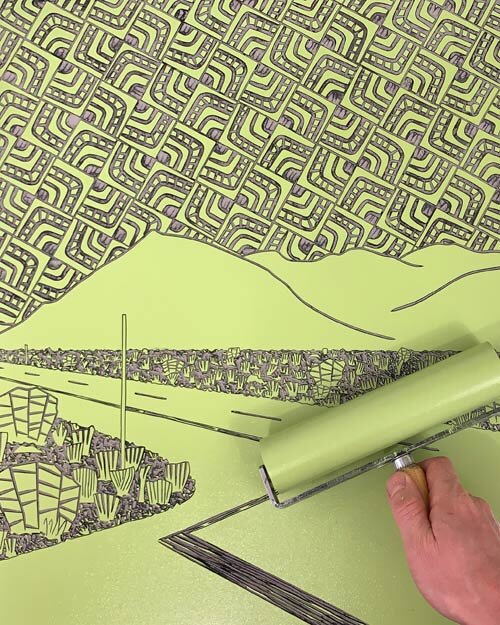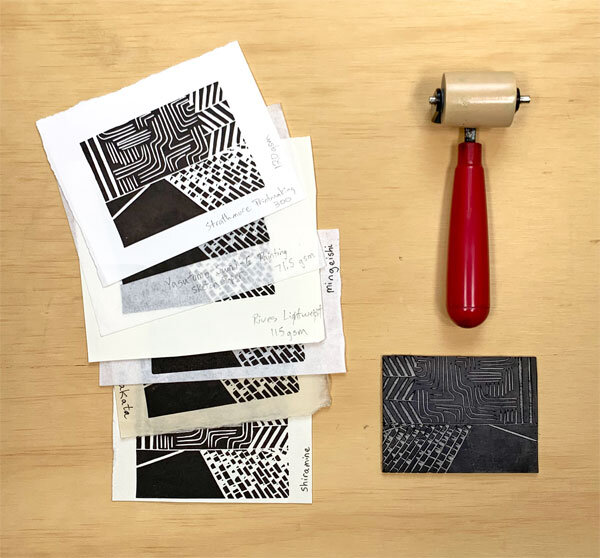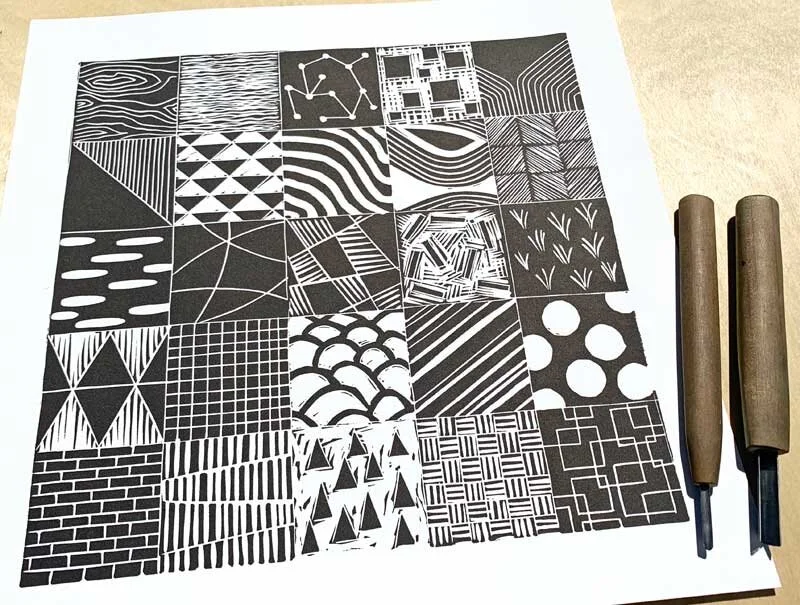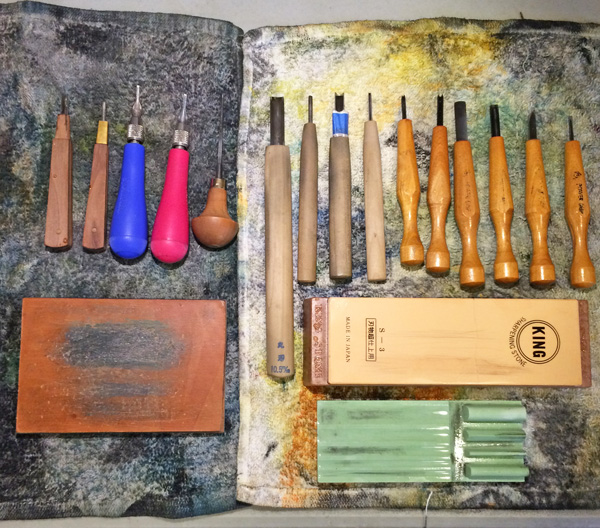
Lake Tahoe Linocut
This is how the Lake Tahoe linocut that I recently posted about turned out after the final colors were printed. It's a reduction print and will be a very small edition (less than 10 prints) after I toss out the misprints.

With two shows in December and a camping trip coming up, I'm happily cranking out several new prints including this 10"x13" ski-themed poster. The first block (sky and mountains) was done in multiple shades of gray and I'm now carving the second block (on the right of the photo), which will be printed on top of the first image with green, blue and black.













